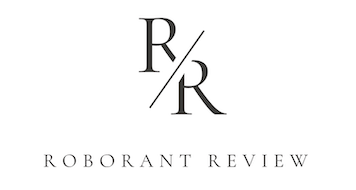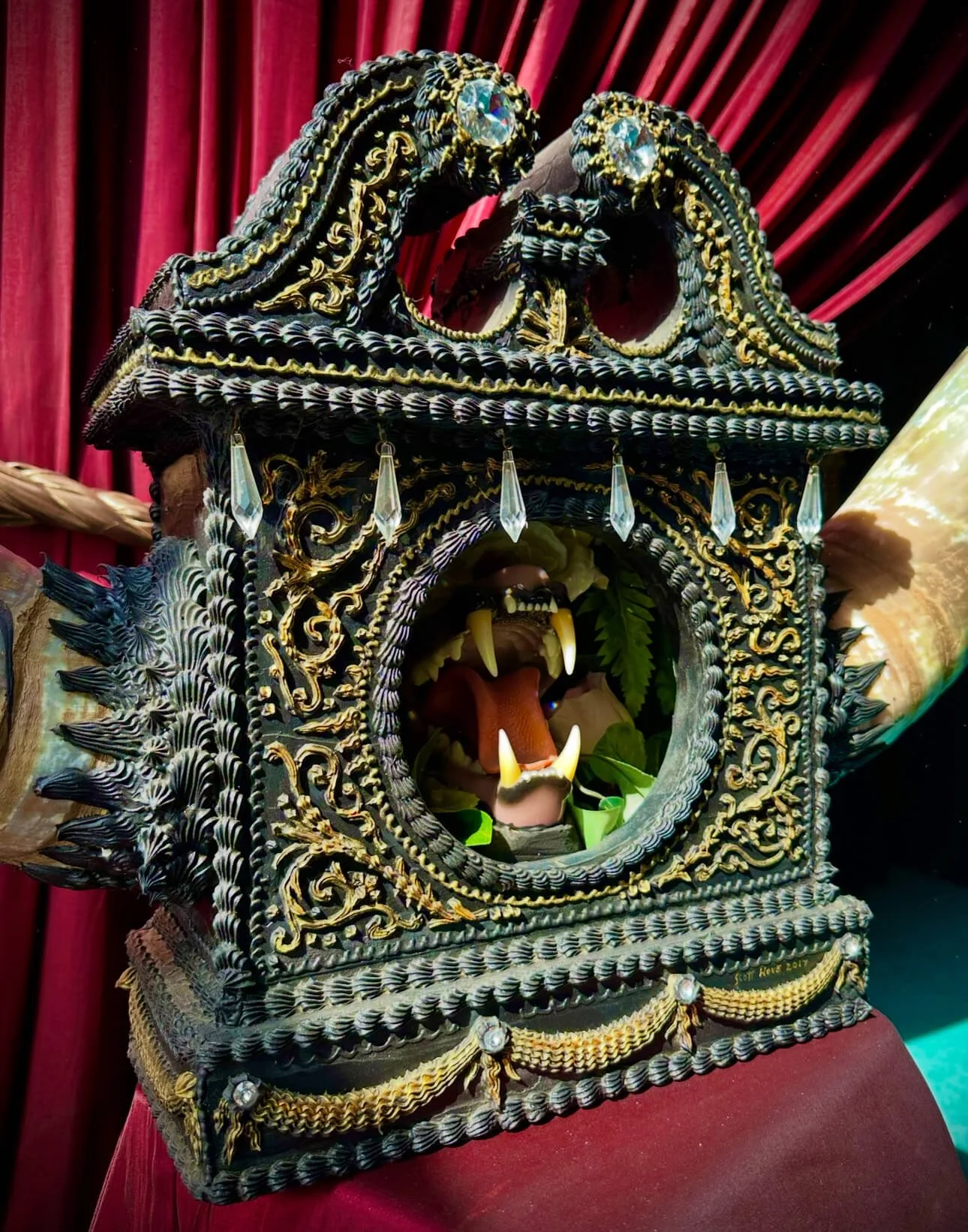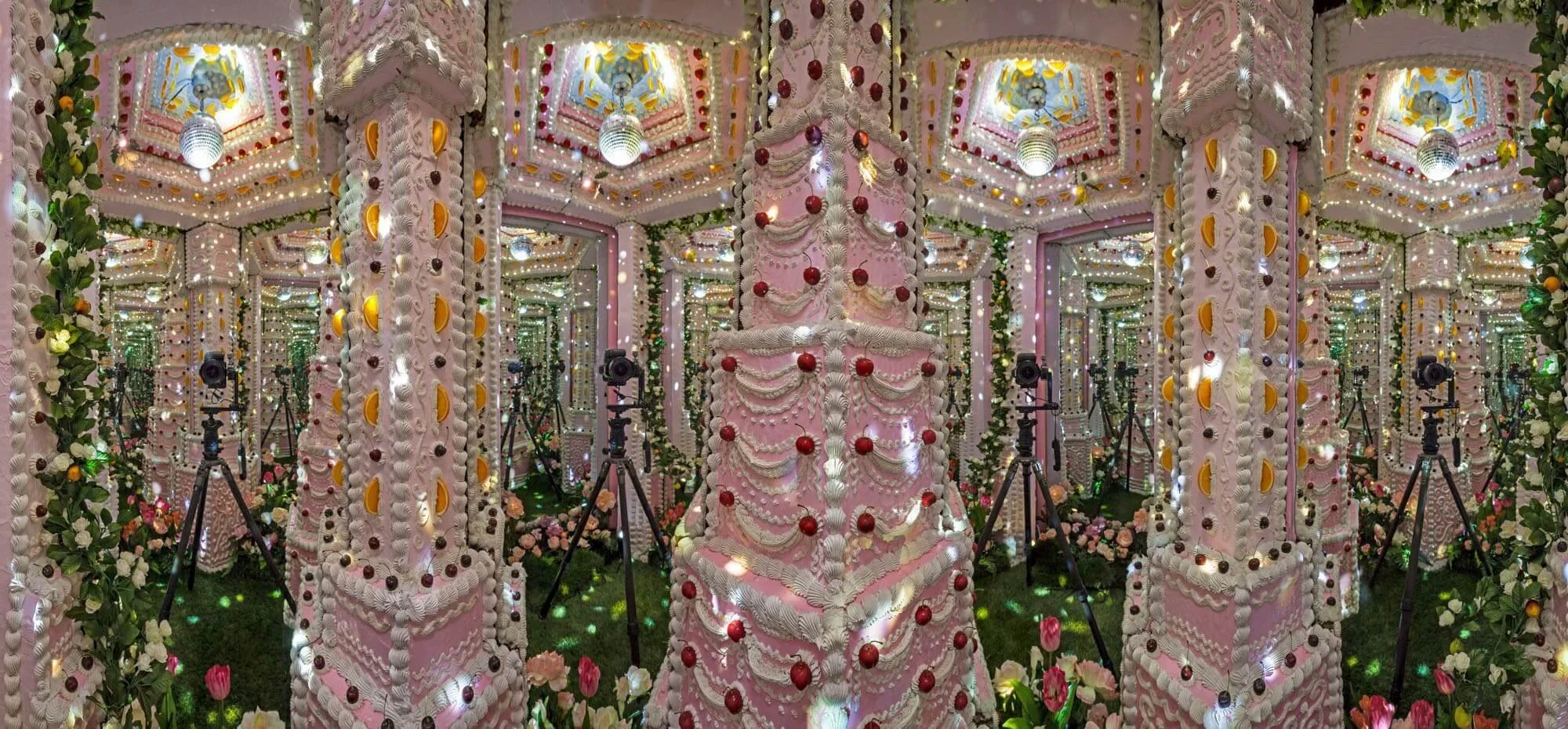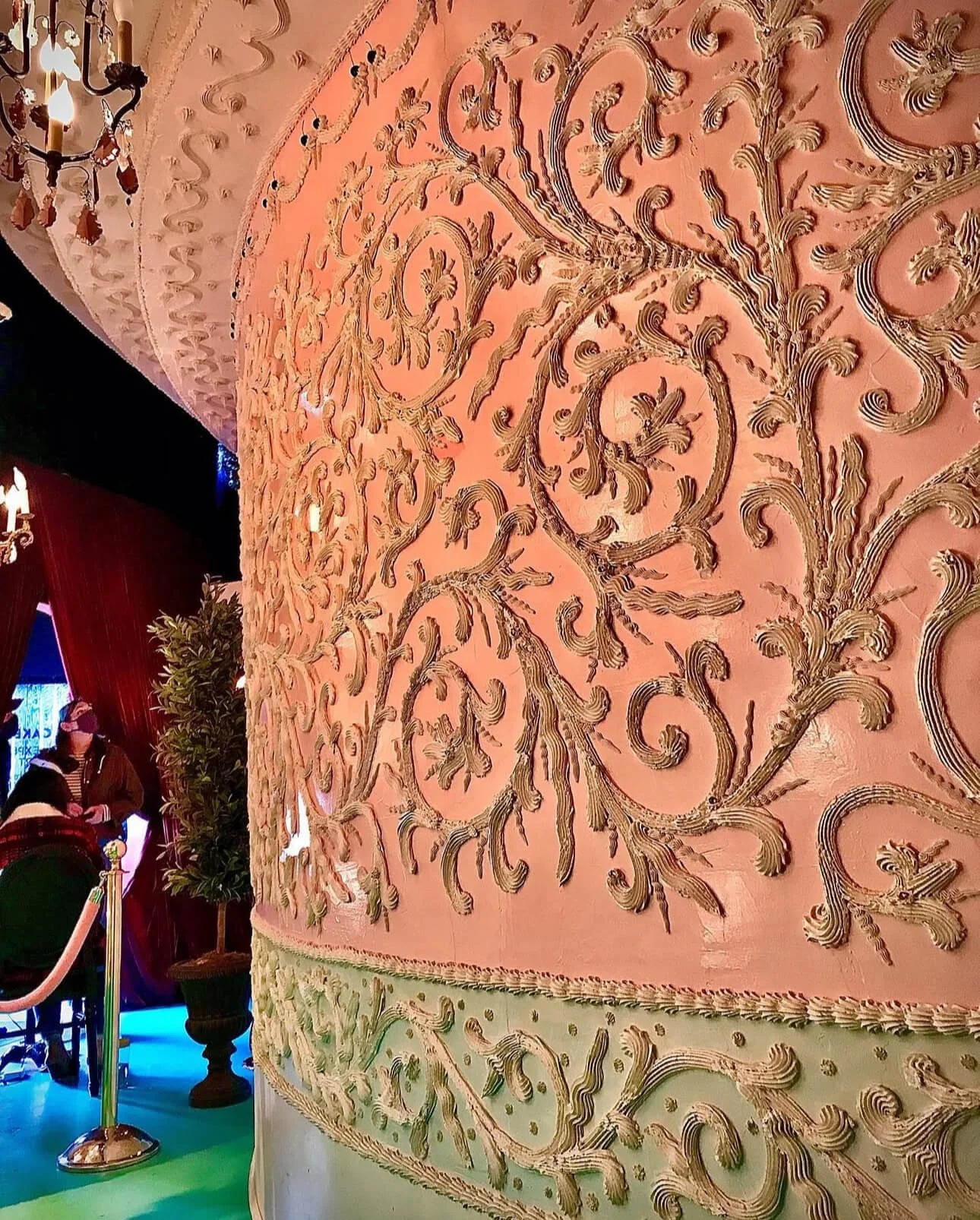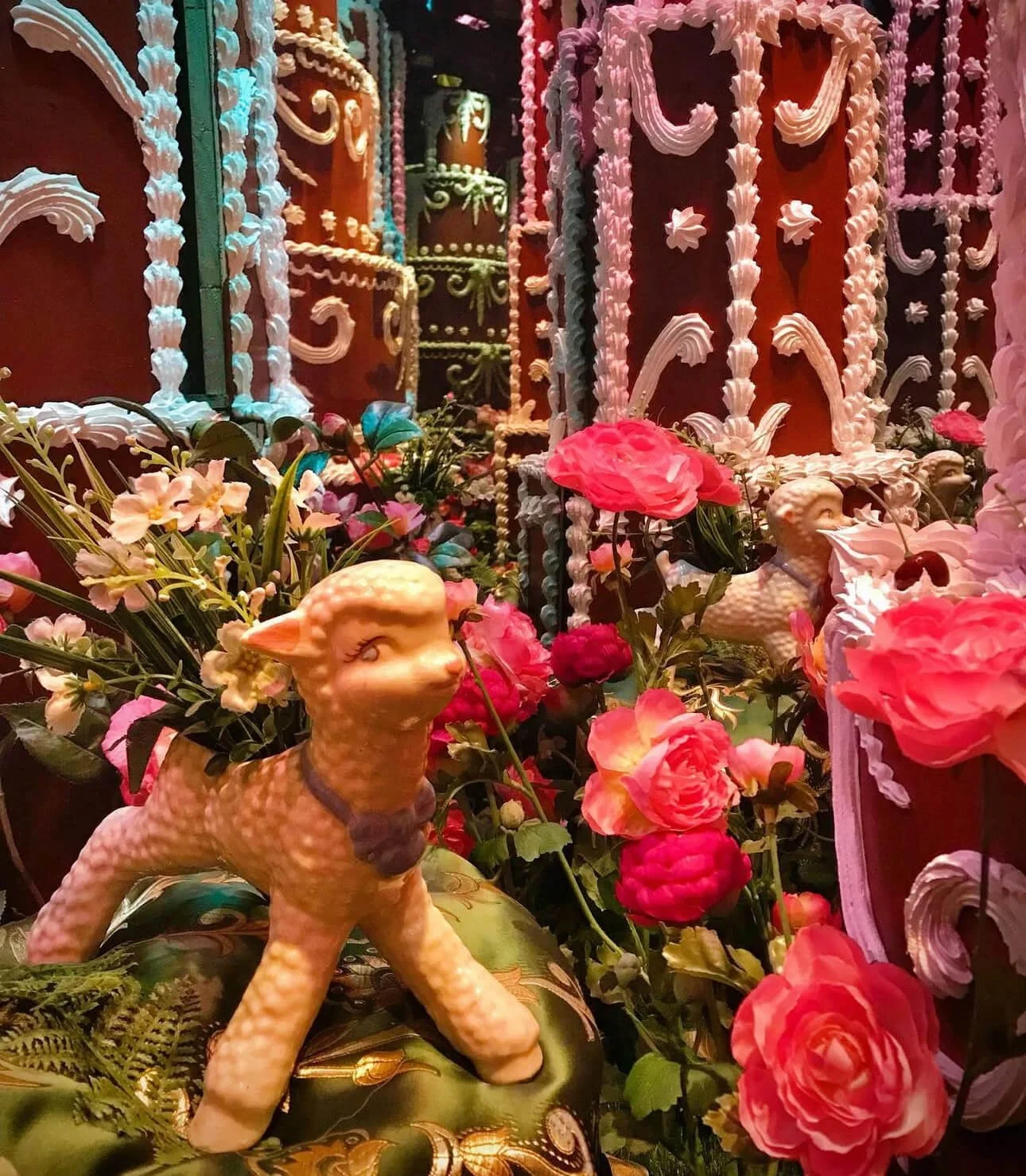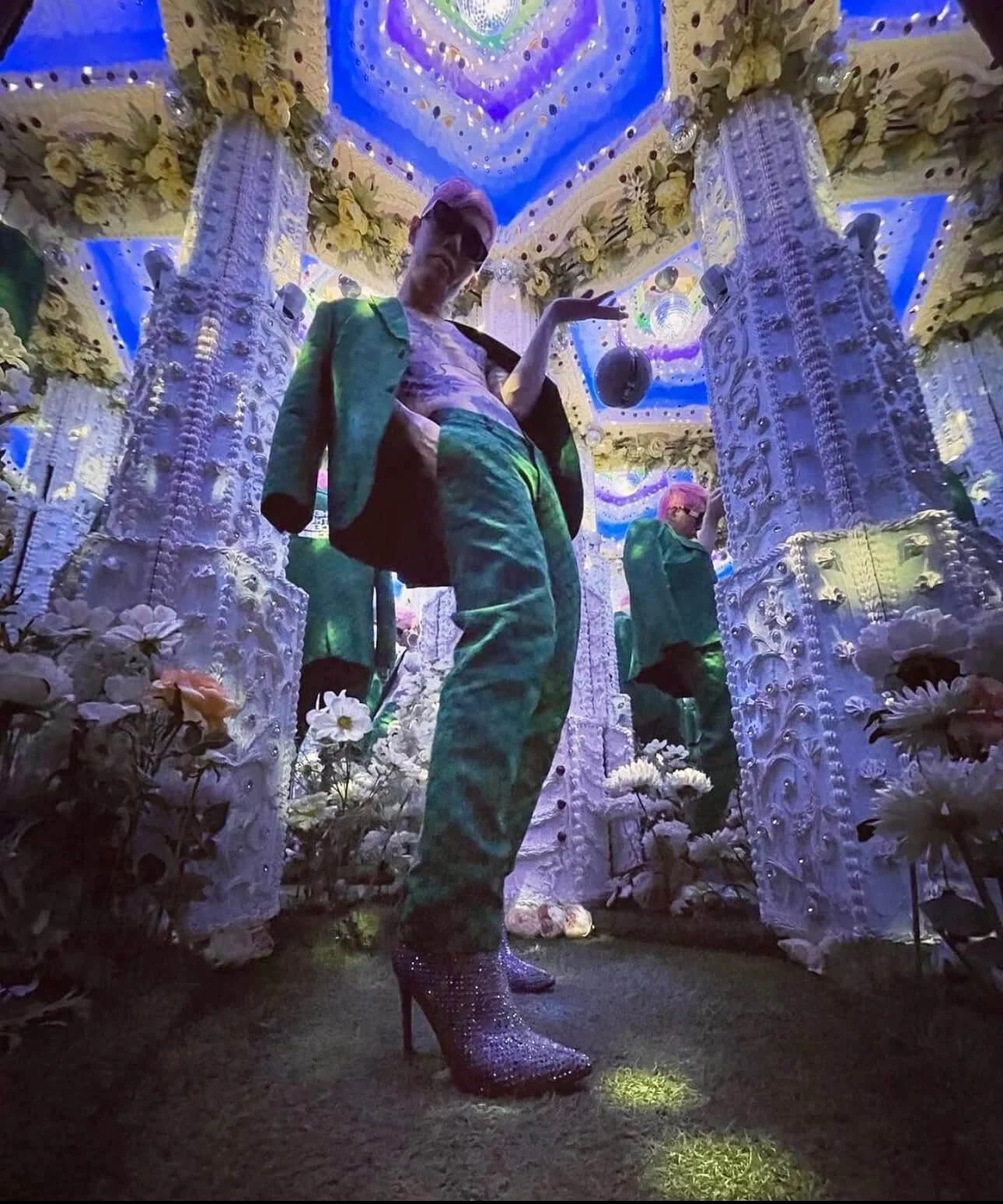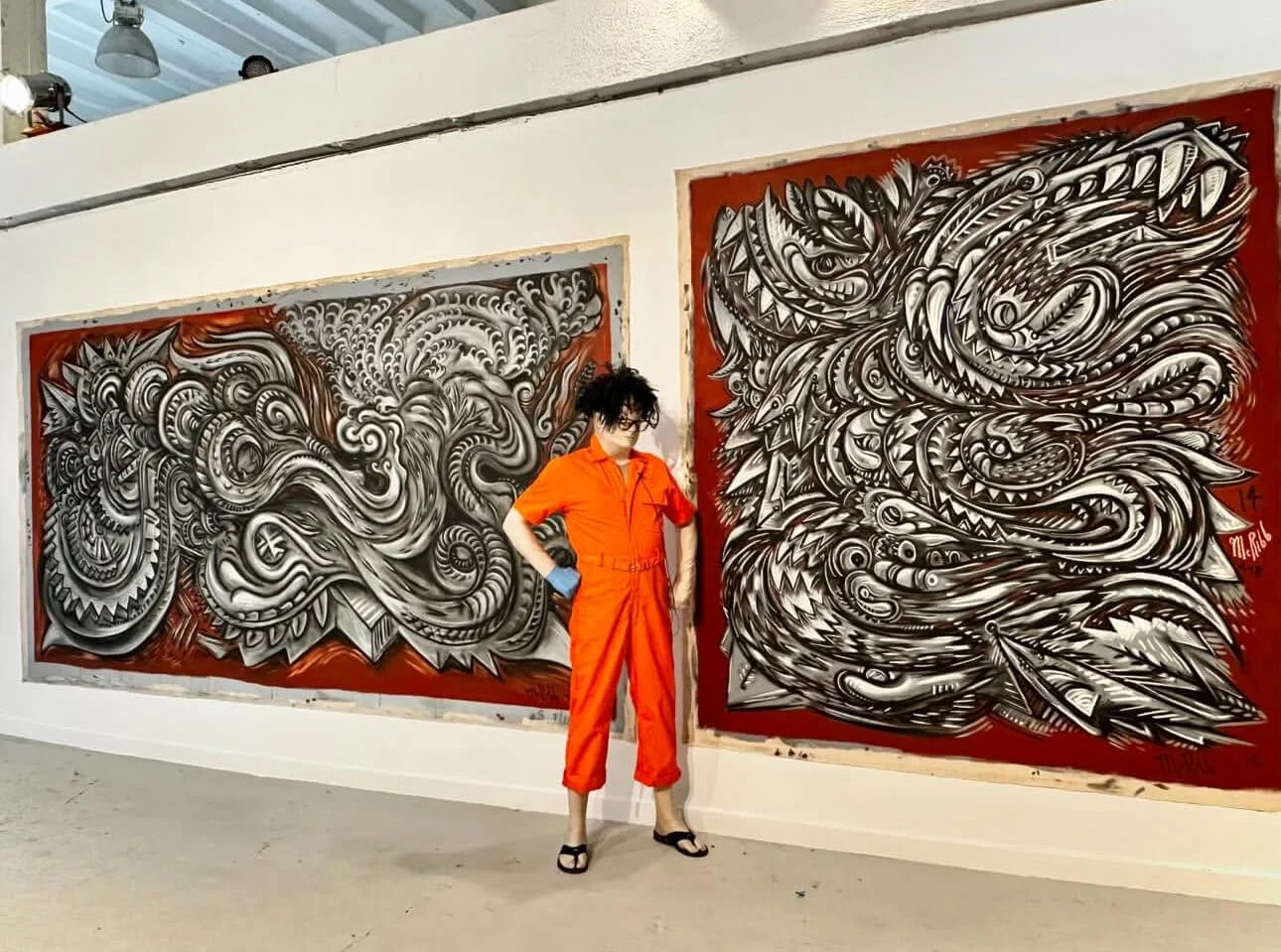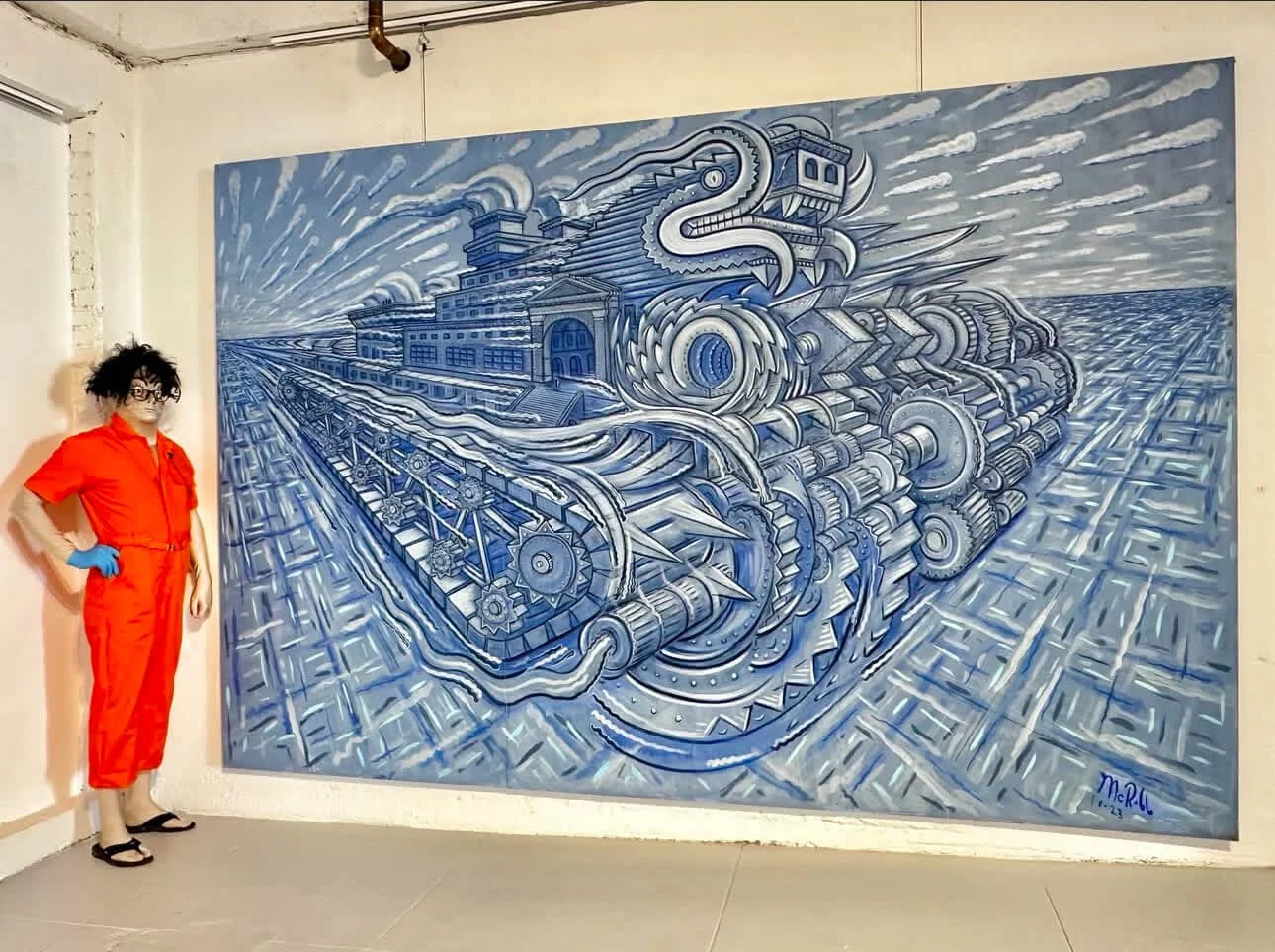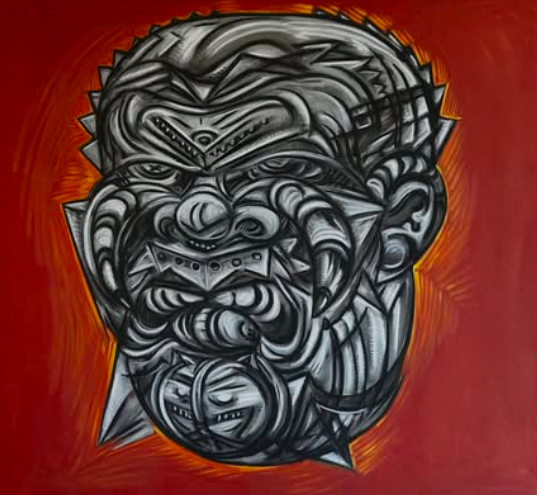Scott Hove
Scott's ongoing series of lush 'Cakeland' installations and sculptures describe an allegorical paradise, in the process of re-integrating light and dark, from a false dualism to a true whole. Using an emotionally compelling narrative with delicious looking and fear provoking materials and imagery, the viewer is at once seduced by the promise of 'heaven' while being reminded by the presence of a imminent 'hell'.
Hove has exhibited with Merry Kanowski Gallery, La Luz de Jesus Gallery, Roq la Rue, Think Tank Gallery, Hashimoto Contemporary and more recently collaborated with Banksy to create Dismaland in the UK. His work has been commissioned internationally in the United States, London, and Beijing. Hove’s sculptures and installations have been featured in Smithsonian Magazine, LA Times, Architecture & Design, Food and Wine, KQED, The Cooking Channel, Hi Fructose, Vogue, The Daily Telegraph, and more.
Hugh Leeman: Scott, in a Los Angeles Times interview, you described your work as a way to integrate darkness into light, which in many ways seems to suggest a Jungian incorporation of the shadow into the self to facilitate personal growth, or knowing oneself and on a larger scale the complexity of oneself and the complexity of society. Since that installation, how have your thoughts on the duality evolved from The Beauty War until now? In what forms has that manifest in your current practice?
Scott Hove: Wow, that's a good first question. That's really intense, but duality has always been a main focus of my work. My thoughts about integrating shadow into your person works as a way to sort of understand yourself in the world. Cakeland, was an immersive installation in LA, when people asked me what the installation was about, I told them that it was an integration chamber where you're faced, by using archetype, it's an opportunity for you to face your own shadow and to be able to integrate it. So there are various visual constructs and scenarios where you could do that. I really love the concept of integrating shadow and I think it's something that not enough people practice or are aware of. So the concept is not duality, it's non-duality. I'm trying to take the concept of duality and make it closer to nature, which is non-duality, because nature and the universe are a perfect integration of light and dark. So, that's my job as an artist, and I think it should be our job as individuals, to integrate light and dark and to go from duality to non-duality. Non-duality is the state of having your light and dark integrated. That's an ongoing process and it's very important work.
HL: Previously you have spoken about beauty and mortality as important elements in your artwork. How do you think that beauty can make mortality less frightening?
SH: Embracing beauty and being able to recognize beauty, and practice beauty by making beautiful things, doing beautiful gestures, being of service—whatever your definition of beauty is—understanding or taking the time to appreciate beauty is really important. It's something that the universe, I think, really appreciates. It proves that you are engaged in coexisting and appreciating. Yeah, the whole concept of beauty is really hard, but for me it's just a way to really appreciate things. Seeing the beauty in different things is a way to really get to know them and to have a relationship with them, particularly in nature. That's how I practice it. I go to nature and I look for any type of life and I try and find beauty in it. Some things are really just up, you know, in your face with their beauty and their color, and then other things are more of a challenge. For me, it's always interesting to find things that people normally do not find beauty in and to search it out and to find it. It's just a good practice. And the more you are able to integrate the darkness, the more you're able to see the rhythms of nature as beautiful, including the sides of nature that are pretty terrifying. And, you know, mortality, it's hard to find the beauty in mortality, but it's there. So it's just good practice to be able to find what that is , then you've already got this practice of appreciation and understanding and integration around it. There's such a charge around dying naturally; nobody likes to think about their own mortality. But if you have a practice around that prior to getting sick and being on a terminal path, it makes it a lot easier.
HL: That idea of nature and non-duality, pulling that into a bigger sphere of what you've been working on over the years, you've spoken of the nature of spirit and of defending it fiercely against the exploitation of capitalism. How has your understanding of nature's spiritual dimension shifted as your installations have come to be more technologically and materially complex over the years?
SH: What I meant with what you just said had to do with capitalism as a sort of representative of industrial civilization and how it crushes nature, which we see every day. The ultra-capitalists, American capitalists in particular, are really good at sucking the blood right out of nature in order to make profit at the cost of everybody else. It's really hard to do anything about it. For me , through my art and the way that I can deal with it is to sort of, in the absence of being able to confront its total presence in society I can't go hands-on and fight these guys—I can only do it with my art because that's my most profound tool that I've been given to be able to integrate that whole concept. And so it has evolved over the years, my attitude around it. I recognize that industrial civilization is part of nature. And if you go into nature, nature, in itself, like the existence of life, it feeds on itself. And there are waves of colonization that happen in every species, you know, like funguses colonize other funguses and they wipe them out, and then years later they get wiped out by another fungus, you know. Or it has any type of animal, plant, animal, living thing, and even some non-living things have evolved with other beings, and that co-evolution is not pretty. It's another thing that is non-dualistic. Co-evolving means living with something and dying with something. And the defense of your species or the defense of your person has to do with just embracing that.
HL: Thank you. In an earlier conversation, you contrasted your installations of Cakeland with Instagram pop-up museums, saying that these Instagram pop-up museums forget about art's emotional and intellectual depth. How do you see this tension between the spectacle and the substance of art's emotional intellectual depth regarding the public's appetite for such depth as it relates to the massive changes and social tumult of the last five years, from when Cakeland started until now? How have these things changed, and how do you see them continuing to change the appetite for this emotional intellectual depth?
SH: The intellectual depth needs to be maintained when it comes to this art form of doing immersive installations, which is what Cakeland is. So, I did my installation. When I first came to LA, I had a smaller version that was a real hit, and it set off a chain reaction with other opportunistic people who saw the attraction of these immersive shows, which are really easy to monetize. And so, talk about capitalism taking over a good art form. LA became the center of these Instagram pop-ups. A lot of them food-themed, a lot of them derived from my Cakeland installations, and they were more interested in the efficiency of the business model. And in the process, considering the intellectual content was not a priority. You know, it was just like, "Let's paint some walls pink and put some props in there and sell tickets for $25 a head, have it up for two months, take it down, and then disappear," you know? And it's a great business model. You put in, you know, half a million dollars or less. Everybody gets burned out on it because there's no depth, so nobody's going to go back. And then three or four months later you have a profit, and it's a really solid process. These capitalists really turned the art form into something really cheap and disposable by leaving out any depth or intellectual discourse. And that is really irresponsible because it's not that hard to do. You know, if you're smart enough to put together the business plan and build out the installation, take the time to give it some content that is meaningful. It's not that hard. If you can't do it yourself, hire somebody who can, but they don't do it. But I do. And that's why my work is better than all these pop-ups. And those pop-ups, COVID was sort of the death of them because nobody was going out anymore, and everybody moved on, and everybody was getting really tired of them anyway because they were just one after the other. They just got worse and worse. So, I would love to do another one, but it's got to be on my terms and it can't be part of that scene. The business model is solid, but doing a ticketed immersive installation is a great business model. I would love to do it again, but it's got to be done in a way that's respectful of the viewer.
HL: Taking that idea of it being respectful to the viewer and the importance of the intellectual depth that you're talking about, your installations have featured false portals and illusions that evoke uncertainty. You've described them as metaphors for fragility and for time. What are the false portals, illusions, and the fragility of our current times?
SH: Portals are, you know, so I create a series of vignettes and then compositionally, everything is composed. Like, you walk through a room and then there's a little window, and you look in the window and it goes into another world. And that world has its own portals that go to other worlds. It's just a way to create a more satisfying storytelling experience for the viewer. And you can contrast color and lighting and theme with these layers of portals. It's just a really satisfying thing to do. And again, it's a way to respect the viewer by giving them an experience that they didn't even know was possible. And it's so fun to do that. I'm just obsessed with portals and creating them in new ways, to do it with mirrors and, you know, practical theatrical tricks. There's just a lot of satisfaction in creating these illusionary worlds that are easy to fall into and believe. Capturing somebody's imagination, letting them travel into these portals and giving them a payoff, an emotional payoff, a visual payoff, something that they're never going to forget by going through these portals is something I take a lot of pride in as an artist. Very satisfying. So, there was a second part of your question, but I spaced on it.
HL: What are the illusions that are taking place in society? What's the fragility in society of our current times that inspired you to think on these things and ultimately make them into an art installation?
SH: Well, everything is very fragile at all times. You know, there are no guarantees that anything's going to last. Time is unpredictable. The future's unpredictable. The present is unpredictable. So, assuming that everybody accepts the fact that everything is fragile, you're looking at the world through that scope—that everything is ephemeral. We don't think about that, but that's just how it is; everything is very ephemeral. So what I do is I observe the world struggle with being able to accept things as ephemeral or the world unable to accept that things are non-dualistic, and they cling on to this dualism popularized by religion, you know, angels and devils, heaven and hell, light and dark. And then I just sort of convey that over into these allegorical situations in just amazing beauty, layered beauty with color and depth and feeling, and then right next to it, juxtapose it with something that is just nakedly harsh and difficult, you know, representing sort of the mortality or whatever it is personally that one person is dealing with that represents the darkness. So, having these images next to each other, of course, you have to use the rules of aesthetics and everything else to make them integrate in a way that's good, that's beautiful, that works in an artistic sense in whatever the definition of successful art means, you know, which in this sense I get to make the final decision on. And, yeah, it's up to me to create the metaphor in a way that is convincing, you know, because there's a lot of ways to do it that are not convincing. And not everybody is going to find what you do transcendental or really believable. Some people are going to walk through the installations and not see the point, but that's okay. They're not my target audience. The people who come out truly moved and who have that integration experience inside the installations, those are the people who I target.
HL: I want to go back to something really interesting that you said earlier about Cakeland setting off inspiration for these Instagram pop-ups where people pay 25 bucks, they come in and they can take photos of themselves, and they leave with these photos—basically they're just digital documentations of them doing these crazy things in these environments, and that it really lacked this intellectual depth to it. And I want to connect that with something that you've said around attention sickness, and if you could give a bit of a definition about what attention sickness is, how that relates to society, and then perhaps connect that to how you balance that with as your reputation grows as an artist, how do you balance that with the meditative aspects that are oftentimes private of art making itself?
SH: So, attention sickness refers to a conversation I had with the artist Mark Ryden. We were at a bar having a conversation about what he called attention sickness. And that was when, you know, he's a very private person and he does everything he does by himself, like we all do as artists. The bulk of our processing and time happens in a solo way. But when you come out and you go to your art opening—and I've experienced this too—you get all this attention, and all these people are coming up to you, and everybody's talking to you, and there's all these layered conversations, and you got to run over here and you got to do this and you got to do that, and everybody's demanding a certain amount of your time. All these people have different agendas. Some people want to be seen with you. Some people want to get a word in with you. Some people want something from you. Some people are mad at you. And it all happens simultaneously. And after a period of time dealing with that, you get sort of like a physical sickness. You know, you feel muscle-achy, you feel exhausted, you feel a pain. And then when you leave, it's just a cacophony of sounds in your head, and you need a decompression time to be able to move beyond that illness. And if you don't, it could really make you sick. So that's what attention sickness means. There are other types of attention sickness too. I mean, the people who are constantly, what Buddhists call hungry ghosts. You can never be satisfied with anything, FOMO is another word for it, fear of missing out. You have to be in the middle of everything all the time. You crave constant attention. That's sort of the opposite, that's the other side of the same coin as attention sickness. One side is getting all this attention you don't want, and the other side is never being able to get enough attention. That's another type of attention sickness. And these installations, the pop-up, the selfie pop-up kind of things, really serve those people because it's an opportunity for them to look really pretty and to post it on their social medias so everybody can see it. If people are going to do that, you may as well give them a context to do it in that has some meaning to it. These people would be perfectly happy to take pictures of themselves on a dirt pile, but you don't have to do that. You can give them something that has a lot of content, whether or not. So, you're performing multiple services to viewers by creating a beautiful environment where they can see themselves as looking beautiful, and then also in the same environment, create something that somebody who naturally is looking for more depth gets an experience that satisfies them and gives them something they won't forget. So as somebody who builds those installations, part of your responsibility is to appeal to all those people and give them something that can withstand intellectual and artistic scrutiny and simple aesthetic scrutiny and be successful enough to actually sell tickets repeatedly, you know. But it's a unique challenge and it's good.
HL: I want to change gears here from talking about Cakeland and your installations and some of the philosophies and concepts to focus on another aspect of your art practice. Who is OG McRib and what inspired his creation?
SH: So OG McRib is a guy who sort of follows me around and does paintings. So we have a symbiotic relationship. We inhabit the same body, but he's what you would call an alter ego. And the alter ego developed when I was in Los Angeles, which is the sort of like the geographic center of alter egos. People move from all over the world to go to Los Angeles in order to be the version of themselves that they weren't born as, you know, to create their own alter ego in order to live the life and get the attention that they want, or to be the dream version of themselves that they aren't in real life. And that has good and bad aspects, like anything else. It has a good aspect because alter egos are a wonderful tool to be able to experiment with different sides of your personality, and it gives you a mask to be able to do that without being judged because nobody knows who you really are. It takes a lot of confidence to go out publicly and present your art as your normal self. People are judging you based on your actual appearance and your real name and everything. So if you have an alter ego, you can bypass all of that and you can inhabit parts of yourself that you would otherwise feel uncomfortable about. OG McRib is not obligated to be nice to anybody. He's not obligated to have opinions that please people. But OG McRib has an obligation to create really banger works of art, really important, huge, loud paintings that are good.
HL: We started by talking about the Jungian concept of the incorporation of the shadow into the self. Is OG McRib your shadow?
SH: No. The integration happens in the art. McRib is more of a nonidentity. OG McRib is like a dummy, like a test dummy. Doesn't look like anything. Has no ethnicity. Has very little sex. Doesn't have any age. It's just sort of a representation of what a person is, like a mannequin. And that brings up its own story of why it exists. But bypassing the intense scrutiny of personal identity, McRib is a construct to be able to keep the eye on the art and not the person making the art, and taking the identity of the artist very seriously. That's something that makes me kind of tired is people judging people's art based on their identity, rather than the art itself. And, yeah, there's just too much weight and importance given to identity when the actual artwork is the cultural driver. The identity is not a cultural driver; it's just a name tag.
HL: How does embodying OG McRib allow you to explore ideas such as, say, consumerism or masculinity? You talked about him not having an ethnicity or not really having a gender or sex. How does it allow you to explore these concepts differently than say your work with Cakeland or The Beauty War?
SH: The nonidentity just gives me permission to do anything I want and not be judged. That I'm not obligated as OG McRib to make anybody feel good or to follow anybody's rules or to be acceptable or to be palatable. The work is not being made for any of those practical reasons. The work is being made for impractical reasons. That's why the works are so giant. Nobody's going to put those in their house because nobody has a house big enough to put those in. OG McRib is an excuse to be able to do whatever I feel like doing. And that's a great release and it's a great relief to be able to express yourself unencumbered by practical considerations.
HL: It's interesting. It sounds like it's very cathartic and in some ways it's perhaps antithetical to what we see. Going back to your idea on the Instagram pop-ups where we have a society that becomes obsessed with constructing an identity that will be desired, that will get emotional feedback through the emojis of likes and so on. And you're taking something in the exact opposite direction. Is that fair?
SH: Absolutely. Absolutely. That's a good way to describe it. Identity is so carefully constructed to win followers, and that is moving the dial away from the art and towards the identity. But that's just how things are right now culturally. People are really obsessed about identity. But that's a trend, that's a temporary trend. It's like politics, there's certainly good political art, but there has to be some type of timeless quality, archetypal quality, in political art for it to be relevant outside of the immediate political cycle, because these things have tides. You know, they're relevant and then suddenly they're not. So, if you're going to be doing that type of art—if you want it to last long, I mean, not all art needs to last a long time—but if you want your entire body of work to be held in some type of historical context, then use it through archetype, or use it, and in my case, integrating light and dark as sort of the philosophical justification to do the work.
MCRIBB NUMBER ONE, Acrylic on Canvas
HL: If OG McRib did this interview today, in what ways would the answers to these questions have been different?
SH: OG McRib is just not interested. I mean, the answers would not be tidy. There's less emphasis on tidy conclusions or completing thoughts. There's more of a priority with OG McRib to get into sort of not ambiguity, but... what is the word I'm looking for? Just sort of like things that are clashing, things that... oh man, the word that I'm looking for is...
HL: Paradoxical or oxymoronic?
SH: Something like this. Yeah, paradox, oxymoron. I like things to not be settled. OG McRib does not like to keep the chaos of not knowing how things are going to end. OG McRib is not obligated to provide anybody with any type of satisfaction that things ended in a good way or in a way that makes sense. You know, sort of like David Lynch did that in his films where most people who did not like David Lynch resented the fact that he did not provide them with a satisfying answer. And that tension is very important in art, especially McRib's. You don't know whether it's correct or incorrect. You don't know if it's ethical or non-ethical. It's simply telling a story that is ambiguous. I'm tired of all these happy endings and tidy conclusions. It's too easy. The world is not like that.
Time
Mixed media
38 x 22 x 12 in.
HL: Indeed. I want to ask one more question to kind of pull things full circle here from the idea of nature that you spoke of, the non-duality, and even where we find ourselves today as a society. You had said previously that, "There's always got to be some scary stuff that emphasizes the pretty. If everything's just beautiful, it's really boring." Today, it seems there's plenty of scary. What is the beauty that you see in life as we face such uncertainty of the future?
SH: Remind yourself as everything gets really bad that just because things are unpredictable doesn't mean that you're obligated to be miserable because of it. You know, my life has been so unpredictable because of the decision I made to be an artist. I've been moving around not because I wanted to, but because I had to. Total insecurity with money, insecurity with food, housing, not knowing what's going to happen next week is not the worst thing. Things being uncertain and unpredictable is not the worst. There are things that are much worse, you know. And appreciating beauty and finding joy when things are really unpredictable and dangerous is like master-level beauty appreciation. If you can find a way to be happy when everybody else is freaking out, if you can be content, go out in nature and just appreciate beauty the way you normally would. Hold your center, your non-dualistic center, in the midst of turmoil, then you're really doing it right. And the advantage of this dangerous time that we're heading into, the beauty in this moment is knowing that art expression, people's expression, are going to be that much more urgent, and everything that we do artistically is so much more urgent. You know, because when things are easy and people don't have to worry about anything, the art that people make, that society produces, is really kind of shallow, and it doesn't have a lot of sort of like spiritual fitness to it, you know. It's just kind of shallow and it's easy come, easy go, you know. But being able to create amidst turmoil I think the art and the music and the expression that's going to come out of the danger that we're going into is going to be excellent. And that's something to look forward to. And just because things are going bad doesn't mean that that stops us from being able to participate and continue to help others out and to be of service. You know, we don't need to withdraw into this selfish cocoon of selfish protection, constantly protecting yourself. Things are changing, but we can evolve. And if you can't evolve, then you know you're not going to be in favor of nature. Nature appreciates those who are sort of engaged in the non-dualistic process and see the beauty at the same time. So, yeah, things are just going to get more urgent, but in bad ways and but also in good ways. So keep an eye on the good ways and, you know, there's no point in letting anxiety drive. A lot of people are going to not be able to maintain their center. That's what chaos is. It spreads around. It freaks people out. And that's part of the current politics is scaring people. So seeing what it is and being able to sort of maintain your practice of being whole spiritually is going to get you through it. And so that's my belief.
VENALITY AND MORAL TURPITUDE
HL: That's excellent. You know, as you say that, it makes me think of a quote often attributed to Viktor Frankl the author of, Man's Search for Meaning, in which he is often paraphrased as noting that, “Pain is inevitable, suffering is optional." I feel like what you've just shared really resonates with that idea that there's an inevitability to the challenges, the pain, the ephemerality and death of life and mortality, but it doesn't mean one has to suffer through the anxieties and the obsessions of the negative.
SH: Suffering is part of the human experience. You know, we're not superheroes that can transcend all human feelings of regret or fear or mortal terror or self-loathing or whatever it is. I mean, we're all going to experience anxiety, fear, suffering those are all on the spectrum of life that we're all going to experience sometimes. But, yeah, being able to remember and to stay focused on the beauty and realizing that you don't have control over everything and letting go of the anxiety of the things that you can't control, you have to do it. It's a survival skill to stay clear of all that unnecessary anxiety and uncertainty.
Hugh Leeman: Scott, thank you so much. That was wonderful.
Scott Hove: Yeah, you bet, Hugh. Your questions are really thoughtful and intense and layered. That's good. I like it.
